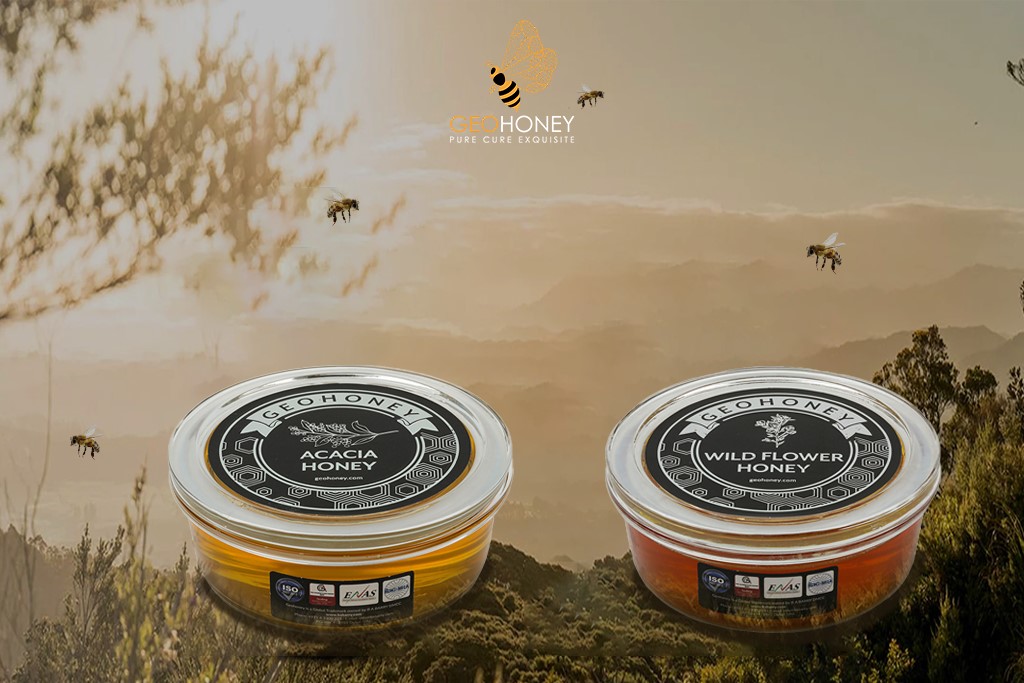- Tokyo: 19:20
- Singapore: 18:20
- Dubai: 14:20
- London: 10:20
- New York: 05:20
How Wild Flower Honey is Different From Monofloral Honey

Introduction
Honey, often referred to as the golden elixir of nature, manifests in an array of forms and flavours. Amongst these variations, two distinct types stand out: wild flower honey and monofloral honey. Understanding the contrast between these two varieties is not only valuable for honey enthusiasts but also essential for culinary professionals.
In this blog, we will embark on a journey into the world of honey varieties, exploring what sets wildflower honey apart from its monofloral counterpart and why this knowledge is indispensable.
What is Monofloral Honey
Monofloral honey is a type of natural honey that predominantly originates from the nectar of a single type of flower. This natural honey variety is renowned for its unique flavour profiles, which are a direct result of the specific flower's nectar that bees predominantly forage on. Notable examples of monofloral honey include lavender honey, clover honey and orange blossom honey. The hallmark of monofloral honey lies in its purity, sourced exclusively from a single nectar-producing flower.
What is Wild flower Honey
Wild flower honey is a harmonious blend of nectar collected from various wildflowers. This honey variety is a reflection of the diverse plant life in a particular region, rendering it a complex and flavorful option. While monofloral honey encapsulates the essence of a solitary flower, wildflower honey captures the essence of an entire meadow or forest, resulting in a rich, multi-dimensional taste.
Differences in Taste and Appearance
The taste and appearance of the best honey are profoundly influenced by the source of nectar. Monofloral honey boasts a more distinct and singular flavour profile, ranging from delicate and floral to bold and robust, depending on the flower it originates from. On the other hand, wildflower honey, with its amalgamation of nectars, often exhibits a well-rounded flavour profile with hints of various floral notes and a delightful sweetness.
In terms of visual characteristics, monofloral honey tends to maintain consistent colour, while wildflower honey can range from light amber to dark amber, mirroring the diverse nectar sources.
Production and Availability
Monofloral honey is typically harvested during specific flowering seasons when the chosen flower is in full bloom. Beekeepers meticulously manage their hives to ensure that bees predominantly forage on the target flower. This precision in production can make monofloral honey less abundant and more expensive compared to wildflower honey.
In contrast, wildflower honey is more readily available because it is harvested throughout the year, capitalising on the ever-changing floral landscape. Beekeepers often allow their bees to roam freely, collecting nectar from an array of wildflowers, making wildflower honey a more accessible choice.
Uses and Pairings
Both wildflower and monofloral honey offer unique uses and pairing opportunities. Monofloral honey's distinct flavours make it an excellent choice for specific culinary applications. For instance, lavender honey pairs wonderfully with teas and desserts, while orange blossom honey complements fruity dishes.
On the other hand, wildflower honey, with its complexity, is a versatile addition to your pantry. It can be used in salad dressings, marinades, baked goods or simply drizzled over a bowl of fresh fruit. Its well-rounded flavour makes it a popular choice for everyday culinary adventures.
Conclusion
The world of best honey varieties presents a diverse range of flavours and experiences. Monofloral honey unveils the essence of a single flower, providing a distinct taste, while wild flower honey encapsulates the beauty of nature's diversity in a single jar. Understanding the disparity between these two varieties empowers you to make informed choices in the kitchen and fosters an appreciation for the intricate world of best honey.
Whether you opt for the singular elegance of monofloral honey or the multifaceted allure of wild flower honey, each variety has its place in the culinary tapestry. So, the next time you reach for that jar of honey, savour the nuances and let the sweetness of nature's bounty transport your taste buds on a delightful journey.



